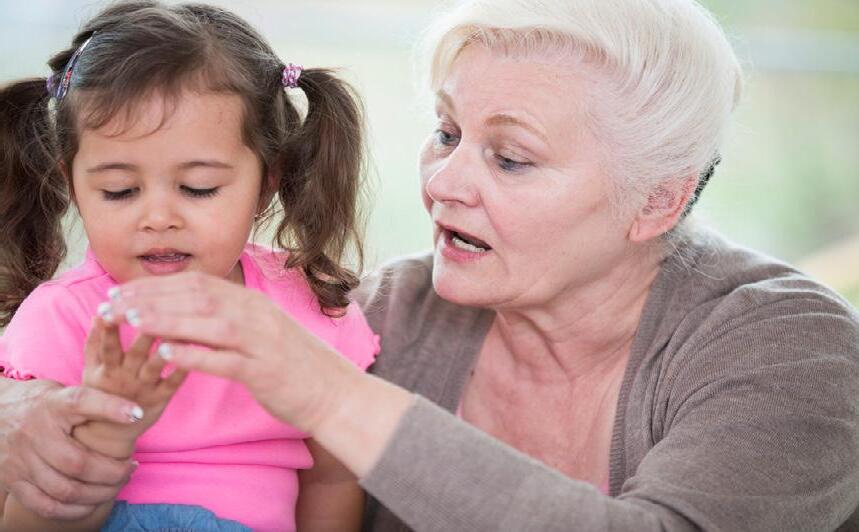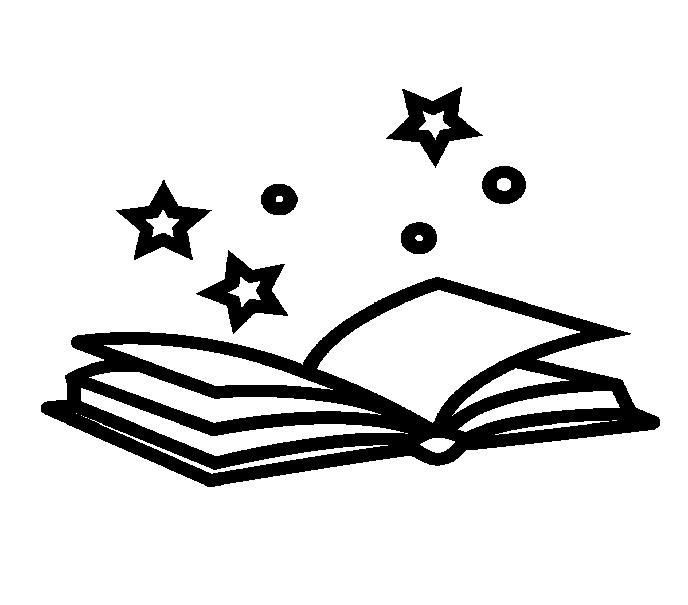







A Parent & Caregiver
Strong Start to Kindergarten
Activity Guide
Help Your Child Get Ready for Kindergarten

What is this book?
This book has many fun, easy ideas to help your child get ready for kindergarten. Most activities in the book are designed for children ages 3 to 5.
What if my child is younger than 3?
Many of these activities build on earlier skills your child can learn with you. Some of those are shown on pages 8 and 9. You can talk, read and sing with children at any age!
What if my child has special needs?
Children develop at different rates. Some of these activities may need to be modified for any child, including children with special needs.
How do I use this book?
There are five important parts. For each part, there are goals for your child. There are ideas for your child to practice different skills.
Different Kinds of Learning
#1 Social Emotional
#2 Language
#3 Cognitive
#4 Early Literacy
#5 Early Mathematics
Types of Skills
Manages feelings and relationships
Speaks and listens to others
Asks questions about the world
Shows interest in words and books
Plays with numbers and shapes
Together we can help every child have a stronger start to Kindergarten!
1
Social Emotional: Manages Feelings and Relationships Regulates Own Emotions and Behaviors
Manages Feelings
Activities:
• Count to ten, slowly
• Practice breathing by blowing bubbles
• Pretend to be in your own bubble to teach child to stay in their own space
• Perform loud and quiet follow the leader action game to practice using a quiet voice
Takes Care of Self Activities:
• Let them put on, take off and put away coat and shoes


• Practice brushing own teeth
• Pack own snack
• Fill up own cup of water at the sink

Makes Good Friends
Forms Relationships with Adults
Activities:
• Talk about their day
• Sing a song together
• Have a bedtime routine
• Eat meals together
• Have a consistent good-bye routine
Understands Others Feelings
Activities:
• Talk about a time they felt happy or sad
Plays Well with Other Children
Activities:
• Observe them during family gatherings
• Take them to a park
• Invite a friend over
• Play “Guess my Feelings” game by making mad, happy, surprised and other faces


• Ask “what makes you happy?”
Plays Well in a Large Group
Thinks About Other People and Self
Activities:
• Helps wash the dishes
• Pick three kind things to do for others in a week
Follows Rules
Activities:
• Give a job or chore at home

• Play board games that include following directions


Asks for Help Activities:

• Let them come for help, don’t jump in until needed
• Talk the child through a problem instead of solving it for them
3
2
Language: Speaks and Listens to Others

Uses Language to Express Thoughts and Needs
Speaks Clearly so Others Understand
Activities:
• Sing songs with the child
• Play "telephone" at the dinner table by whispering messages in your child's ear and have them pass the message along by whispering in the next person's ear. See if the message is the same when it gets back to you
Uses Correct Words When Speaking
Activities:
•Play "I'm thinking of..."
(Child describes an object or animal without telling you what it is, adult has to guess what the child is thinking of)

• Have your child tell you what they see in a picture
Tells About Another Time and Place
Activities:
• Talk about their day (what happened first, next and last)
• Play sports announcer game (describe what is happening while you are doing it., i.e. Cooking: first, take out the bowl, next take out the spoon, then pour the milk..., i.e. Cleaning dishes: first I rinse the cup, then I get the scrubber, next...)
Listens to and Understands Increasingly Complex Language

Understands Simple Words, Questions and Stories
Activities:
• Make up a story & ask what will happen next
• Start a story with “Once upon a time” and take turns saying what comes next

• Play “Using your senses” game (close eyes while touching & listening to the sound an object makes, describe what the object is and what it is used for)
Follows Directions That Have More Than Two Steps

Activities:
• Be the "Leader" and have your child imitate what you do
• Play the Clean Up Game (touch your nose and pick up a lego, pick up a book and jump)
• Pretend you're going to the store and have the child imagine what you are going to buy
Talks with Others and Takes Turns in Conversation
Talks with Others and Takes Turns in Conversation
Activities:
• Practice saying hello to others, shake hands, say thank you to people
• Have a conversation with people on the phone
• Play freeze dance by pausing music during a dance party to practice waiting
• Talk about why it’s important to listen and take turns
4
5
Cognitive: Asks Questions About the World Motivated to Learn
Pays Attention
Activities:
• Eat meals together and talk about their day
• Make a grocery store scavenger hunt
Has and Accepts New Ideas
Activities:
• Make an obstacle course (What is the fastest way to do this, what objects work better, how can they best be used)
• Ask, "How do you think we can solve that problem" (i.e. "oh no, it's going to rain today and we can't go to the park, how do you think we can solve this problem?")
Sticks with Challenging Tasks, Can Ignore Most Distractions
Activities:
• Talk them through what they think they cannot do
• Play Memory Game (make your own) by matching pictures or shapes or colors

Shows Curiosity to Learn
Activities:
• Build with blocks, boxes, cups, etc. Ask what can you make, how high can it go, what shape is it?
• Play the "I Wonder" game (I wonder what would happen if you turned into a bumble bee or I wonder what would happen if we leave the ice in the sun)
Remembers and Connects Experiences
Remembers and Connects Experiences
Activities:
• Ask them to tell you one good thing they liked and one thing they didn't like about their day
• Identify four objects, take one away, ask what's missing
• Play "one of these things does not belong" (put out three objects with something in common and one that does not belong)
Groups Objects



Can Put Like Objects Together
Activities:
• Sort items by similarity



• Help sort laundry/Help put away dishes
• Find things in the room that are the same color
Uses Symbols and Images to Represent Something Not Present
Draws and Builds to Represent Ideas
Activities:
• Have a child read a book to you by looking at the pictures
• Use a stick as a magic wand

Pretends When Playing
Activities:
• Play school and have the child be the teacher
• Be in an imaginary world while your child is pretending to be something or someone else
• Act out stories
• Let them play pretend with your clothes, towels, sheets or fabric
7
6
it’s Never Too Early to Help Your Child Learn — Talk, Read, and Sing Together Every Day!
Learn more about your baby by watching for developmental milestones. Smiling, cooing, and babbling are just a few. Your baby will show you many more milestones in how he plays, learns, speaks, acts, and moves! Look for your child’s milestones regularly and share his progress with the doctor at every well-child visit.
Birth to 2 MONTHS 4 MONTHS 6 MONTHS
. Coos, makes gurgling sounds
. Turns head toward sounds
. Begins to babble
. Babbles with expression and copies sounds he hears
TIP: Hold and talk to your baby; smile and be cheerful while you do.
18 MONTH s
. Responds to sounds by making sounds
. Responds to own name
. Begins to say consonant sounds (jabbering with “m,” “b”)
TIP: Read books to your baby every day. Praise him when he babbles and “reads” too.
12 MONTHS
9MONTH S
sou n d s l i k e
. P o in ts to t hing s orpictureswhen named
ws s impleinstructions
y
. Says several single words
. Points to show someone what he wants
TIP: When you read with your child, have her turn the pages. Take turns labeling pictures with your child.
. Uses simple gestures, like shaking head “no” or waving “bye-bye”
. Tries to say words you say
. Understands “ no ”
“
TIP: Describe what your baby is looking at; for example, “red, round ball.”
.
.Talks well enough for strangers to understand mostofthe time
4 YEARS
. Tells stories
. Can say first and last name
. Knows some basic rules of grammar, such as correctly using “he” or “she”
5 YEARS
. Speaks very clearly
. Says name and address
. Uses future tense; for example, “Grandma will be here.”
8 9
. S a
2 YEARS 3 YE A R S . F o l lo
s sentences with2to4 words
. Makesalotofdifferent
mamamama ” and “bababababa ” .Follows instructions with 2 or 3 steps
Carrieson a conversation using 2 to 3 sentences
TIP: Respond to your baby’s first smiles, gurgles, and coos — she’s talking to you and wants you to talk, too!
Early Literacy: Shows Interest in Words and Books
Demonstrates Knowledge of Sounds in Words
Notices Rhyming Words
Activities:
• Sing nursery rhymes
• Rhyme words with their name
• Sing name rhyming song (Bob, Bob, fo fob, Banana Fana Mo Mob)
Demonstrates Knowledge of the Alphabet








Knows Some Alphabet Letters
Activities:
• Play "I Spy Letters" at the store or while walking outside ("I spy with my little eye the letter A - can you see where it is?")

• Search for letters in ABC order while out running errands
• Draw letters in shaving cream in the bathtub
Knows Some Alphabet Letter Sounds
Activities:
• Sing Alphabet songs
Demonstrates Knowledge of Print and Its Uses
Uses and Understands Books

Activities:
• Borrow from Free Little Libraries
• Go to free story time at the library or bookstore
• Check out books from libraries
Matches Beginning Sounds of Words
Activities:
• Take an everyday song and change the beginning sound to be the same for every word (Bow, bow, bow bour boat)
• Change the first letter in every word you say to the same letter ("So Bob, how was your day?" becomes "So Sob, sow sas sour say?")
• Write a story, make it into a book using paper and tape or stapler
Understands that Words are From Left to Right
Activities:
• Read directions for a recipe
• Underline words with finger while reading

• Point to signs in stores or on the road

10
11
Early Literacy (cont’d.): Shows Interest in Words and Books
Understands and Responds to Books and Other Print
Interacts While Book is Being Read
Activities:
• Ask questions before you turn the page ("What do you think will happen next in the story?”)
• Picture Walk (look at pictures in a book and ask “what is happening before you start reading the story?”)
Uses Beginner Reading Skills
Activities:
• Have child "read" the story to you using the pictures to tell the story
• Pretend to read upside down to get the child to correct you

Retells Stories
Activities:
• Use stuffed animals or action figures to tell a story together
• Have your child "read" you a bedtime story using a favorite book
• Tell each other stories about your day
Demonstrates Early Writing Skills
Writes Name


Activities:
• Draw with crayons
• Practice drawing shapes (circles, triangles, squares)
• Write their name in dots and have them trace the letters
• Write their name, have them trace it with a q-tip
Practice here:
A B C D E F G H I J K L M N O P Q R S T U V W X Y Z
12
13
2 3
Early Mathematics: Plays with Numbers and Shapes
Understands Numbers
Can Count Out Loud
Activities:
• Make a game of counting items (count how many stairs you walk up, count how many things are a certain color in a room, how many trees do you see)
Explores and Describes Spatial Relationships with Shapes
Understands Spatial Relationships (under, over, next to, etc.)
Activities:
• Create an obstacle course with directions: go over the chair, under the table
• Create a scavenger or treasure hunt with directionality clues
Understands “How Many” at a Glance for 2 or 3 Items
Activities:
• Give 2 amounts of goldfish crackers, tell them to eat the one that has more
• Put four small items (rocks, coins, raisins, etc.) in one hand and three the other, have them guess which has more
Connects Numbers with an Amount


















Activities:
• Draw circles with numbers in them, have them place that many objects in the circle
• Use chalk to draw a circle and write a number in the center, have the child jump that many times in the circle
Demonstrates Knowledge of Patterns
Can Make and Repeat Patterns
Activities:
• Listen and follow songs with directions (Cha Cha Slide, Chicken Dance)
• Create clapping and stomping patterns
14 1
15
My Name: ________________________
What activities I liked to do (draw a picture!):
This guide was made possible by Evanston Cradle to Career and is supported by all of its partners.
Public Sector Partners:
• City of Evanston
• Evanston Department of Health and Human Services
• Evanston Department of Parks, Recreation, and Community Services
• Evanston Police Department
• Evanston Public Library
• Evanston Township High School
• Evanston/Skokie School District 65
Academic Institutions:
• Northwestern University
• Garrett-Evangelical Theological Seminary
• Oakton Community College
Health Care Providers:
What activities my grown-up liked to do (draw a picture!):
• NorthShore University Health System
• Erie Family Health Care Center
Faith-Based Community:
• St. Nicholas Catholic Church
• Evanston Own It (a coalition of churches from the 5th Ward)
Philanthropic Community:
• Evanston Community Foundation
• United Way North-Northwest
Other Nonprofit Organizations:
• Books and Breakfast
• Bundled Blessings
• Caring Outreach by Parents In Evanston (COPE)
• Center for Independent Futures
• Cherry Preschool
• Childcare Network of Evanston
• Connections for the Homeless
• Covenant Nursery School
• Curt’s Cafe
• Evanston CASE
• Evanston Chamber of Commerce
• Evanston Scholars
• Family Focus
• Infant Welfare Society of Evanston
• Learning Bridge Early Education Center
• Literacy Works
• McGaw YMCA
• Metropolitan Family Services
• Moran Center for Youth Advocacy
• Open Studio Project
• Peer Services
• Rainbows for All Children
• Reba Early Learning Center
• School for Little Children
• Unity Preschool
• Youth Job Center
• Y.O.U.
• YWCA Evanston/North Shore
16
17
Why is this guide important?
When children practice the activities in this book they can have a stronger start to kindergarten.
What if I have questions?
If you have more questions, talk to your child’s preschool teacher or home visitor.
Do teachers think these skills are important?
Yes. The activities in this guide are based on the Evanston/Skokie School District 65’s Strong Start to Kindergarten Goals for Educators, which can be found at www.district65.net/kindergarten
Good to know:
Interested in more activites to engage your little one?
Join the Talk, Read, Sing Program and receive text messages with fun things to do. Text COE TRS1 to 468311
• Evanston/Skokie School District 65 kindergarten registration starts the first week of March.

Visit www.district65.net/kindergarten for details!

•
©2019 EC2C























































